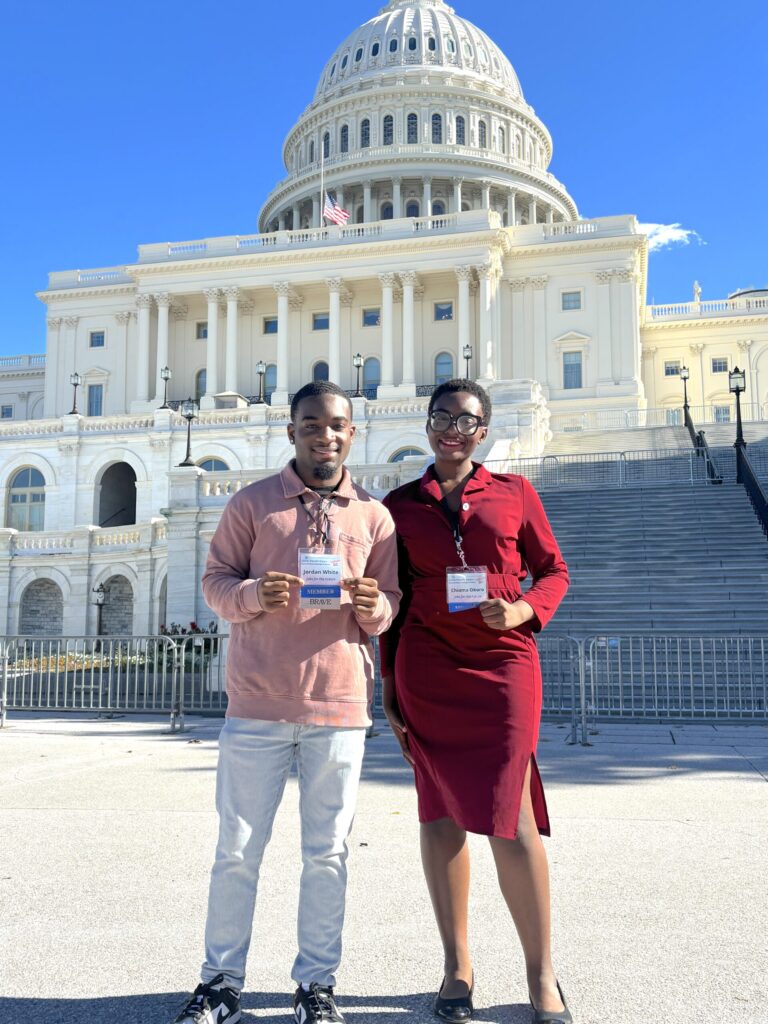With summer ending and a new school year starting, many young adults ages 16 to 24 are likely considering their plans for the upcoming year and what’s on the horizon. Some may be deciding on classes or which career pathway to pursue, how to balance coursework with their job or other responsibilities, and when and how to apply for postsecondary education and training programs that can lead to any of over one million different credentials.
Young people are struggling to determine what’s next. A recent report noted that fewer than three in ten Gen Z students feel ‘very prepared’ to pursue any path after high school. One survey commissioned by American Student Assistance (ASA) and Jobs for the Future (JFF) found that 74% of Gen Z report a desire to learn skills that prepare them for jobs that will be in demand in the future while another survey noted that 73% of Gen Z say it is important for elected officials to take action to ensure education and job training programs prepare people for careers.
Employers are also confronting key challenges with critical industries like health care or construction facing skilled labor shortages. Occupations like Registered Nurses and Nurse Practitioners are at significant risk of shortages despite growing demand for health care services. Meanwhile, in the construction industry, these shortages are estimated to contribute to an aggregate economic cost of over $10.8 billion annually.
Policymakers can and should do more to help young people navigate a shifting and complex economy. A 50-state policy scan conducted by the ASA Center for Career Navigation at JFF found that only six states had adopted a majority of the 19 policies that we believe contribute to effective career navigation systems. Meanwhile, 31 states had adopted six or fewer of these critical policies.
The consequences of policy inaction are profound. Despite multiple research studies showing that access to counselors and advisors is linked to improved student outcomes, many states cannot provide personalized career guidance to every student or safeguards to ensure these offerings are both high-quality and aligned with available postsecondary pathways and careers.
State Activity in Support of Career Navigation
To build on the findings from our 50-state scan and better understand policymakers’ interest in career navigation, the ASA Center for Career Navigation at JFF has begun tracking state legislative activity on this topic (including such terms as career navigation, advising, exploration, awareness, and counseling). We found that nearly 313 bills across 44 states were introduced in state legislatures this year (including the District of Columbia and federal territories) aimed at improving and expanding access for young people to postsecondary and career advising, exploration, and awareness activities. And 32 states enacted a combined 87 proposals into law. Governors have also prioritized efforts to develop more affordable postsecondary pathways and align their state’s career and education programs to better prepare students for the world of work.
Here are a few state highlights from the 2025 legislative season that demonstrate progress in this space:
- Louisiana: Louisiana’s SCR 38 created a Task Force on Career Alignment to develop a statewide strategy for implementing education-to-career counseling across public postsecondary institutions. It will be co-chaired by the Commissioner of Higher Education and the Secretary of the Louisiana Workforce Commission. Its membership includes education and workforce executive and legislative branch leaders, as well as students. The group will provide recommendations to enhance industry partnerships, expand work-based learning opportunities, and strengthen career advising services. It will also analyze education-to-career counseling in these institutions to establish best practices in career advising and work-based learning. The task force will conclude its work by establishing an implementation timeline for its recommendations and a reporting and accountability framework for postsecondary institutions to monitor their progress. We believe that the aims of this law serve as an important first step toward aligning the state’s career counseling efforts with students and young adults toward broader statewide economic and industry needs.
- Texas: Texas passed two bills this legislative session related to expanding career guidance. First, their SB 1 appropriates $3.5 million to increase college and career advising opportunities at high schools with low college-going rates and improve advising for all students across the state. The law appropriated an additional $9.3 million to support My Texas Future, an online career navigation platform that allows students to find and compare careers. If strategically leveraged, tools like these can augment in-person meetings between a counselor and student by providing additional information related to regional job opportunities and outcomes of various postsecondary education and training pathways. Texas’ HB 120 further expanded its advising efforts by allowing school districts to use public funds to continue providing advising support to students who graduate high school for up to two additional years. As states continue to face capacity constraints regarding the availability of counselors and advisors, they can invest to expand the number of practitioners across the state, offer additional services and supports through technology platforms, and provide new opportunities for students to have more 1-on-1 personalized support as they move through additional settings.
- California: California made steps to increase career advising services and support for young people with records of arrest, conviction, or incarceration—a population that is ineligible for some employment opportunities and lacks clear guidance on which education or training opportunities are available to them. Specifically, their AB 123 law appropriates $25 million to the Rising Scholars Network, which provides career counseling services and supports to young people with records enrolled at community colleges. Their services include academic counseling on available community college pathways, support for accessing financial aid, career counseling, and assistance accessing relevant services in other areas (housing, mental health, etc.). State investment in targeted counseling supports like the Rising Scholars Network can ensure that justice- or other system-involved youth receive the dedicated outreach, contextualized services, and tailored supports they need to navigate their education and career options as well as complex public systems.
- Georgia’s HB 192 seeks to establish a clear pathway for students to access postsecondary opportunities through career exploration and advising activities. It outlines requirements for schools to provide students in grades 6-12 with career exploration experiences (including internships, apprenticeships, cooperative education, or employability skill development) to learn about high-demand careers in their region and counseling services to evaluate their skills and interests further. Students will be responsible for developing a college and career plan in grade 8 and updating it annually with their school counselors throughout high school. Additionally, as Georgia students begin to consider postsecondary options, this legislation ensures that their college and career plans will utilize GA Futures, an online platform for exploring college and career pathways, and Georgia MATCH, a state program that provides students with information about which state colleges and universities they are eligible for admission to based on their grades. By integrating career exploration experiences and advising opportunities throughout each student’s high school pathway, Georgia is creating a pipeline that ensures each young person has greater exposure to the information and experiences they need to make an informed choice about what’s next for their college or career journey.
Looking Ahead
Career navigation is multifaceted and lifelong, and no single state law or entity will govern all of its parts while also effectively meeting the wide-ranging concerns of young people, education and workforce leaders, practitioners, and employers.
State leaders in both branches must take a holistic view and utilize multiple policy levers to build more effective career navigation systems. Our 50-state scan provides more information on state progress and where leaders may want to prioritize additional state actions. Service providers, employers, and other stakeholders can share the examples above and others from our 50-state scan to encourage leaders in their states to continue to act. The ASA Center for Career Navigation at JFF will release a policy agenda later this year with additional recommendations for state leaders to adopt and implement regarding crafting a statewide vision for career navigation, expanding access to and adopting quality standards for career navigation practitioners, and incentivizing cross-system collaboration.
This past legislative session has demonstrated a clear interest among states in ensuring that more young people have access to career guidance and well-equipped adults who can help them make sense of available education and career pathways and determine which is right for them based on their interests. While these laws are encouraging first steps for these states, young people’s education and career outcomes will only improve if state efforts for expanding career navigation services are adequately funded, well-implemented, and aligned with broader statewide goals and priorities.
As states aim to bolster their economies, reduce labor shortages, and effectively steward public dollars, they should continue to prioritize policy action that helps young people make informed decisions about their education and career options after high school.
Visit the ASA Center for Career Navigation at JFF’s website or sign up for our newsletter for more information and additional career navigation policy insights.






